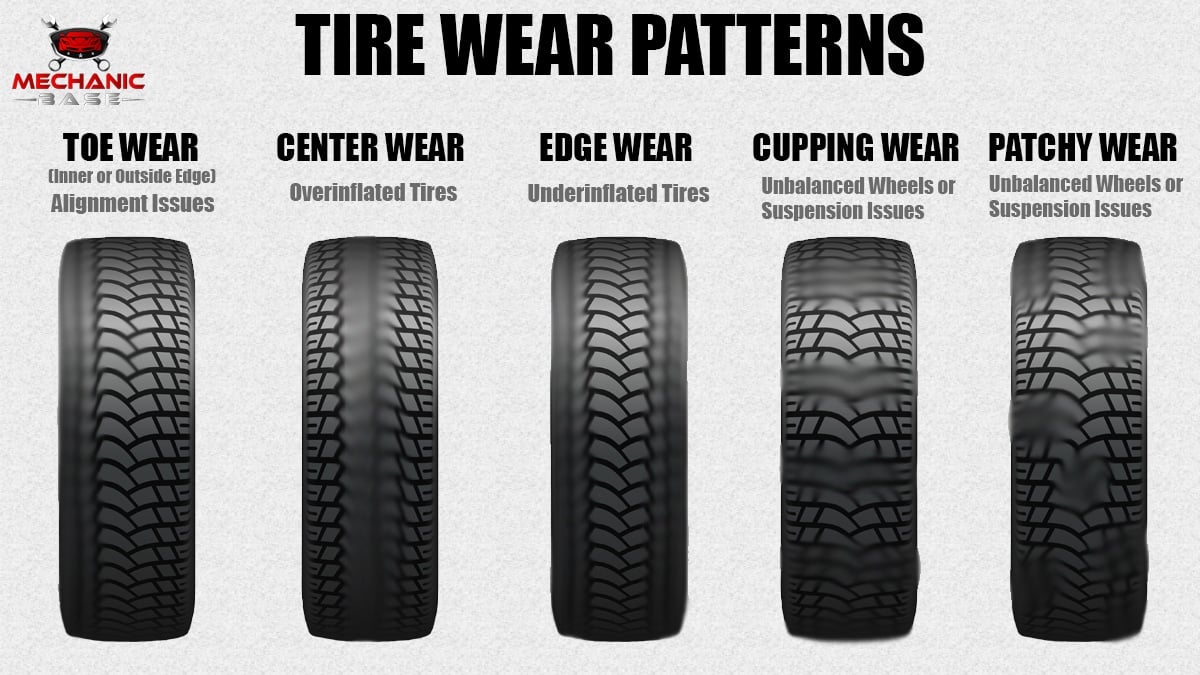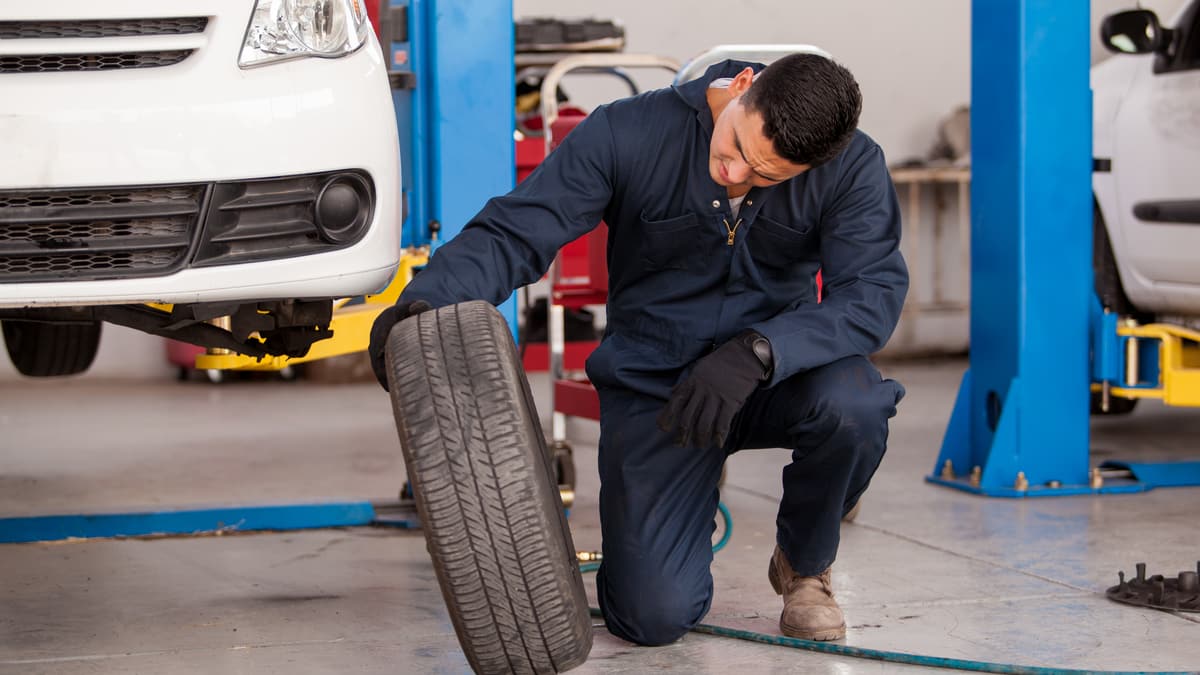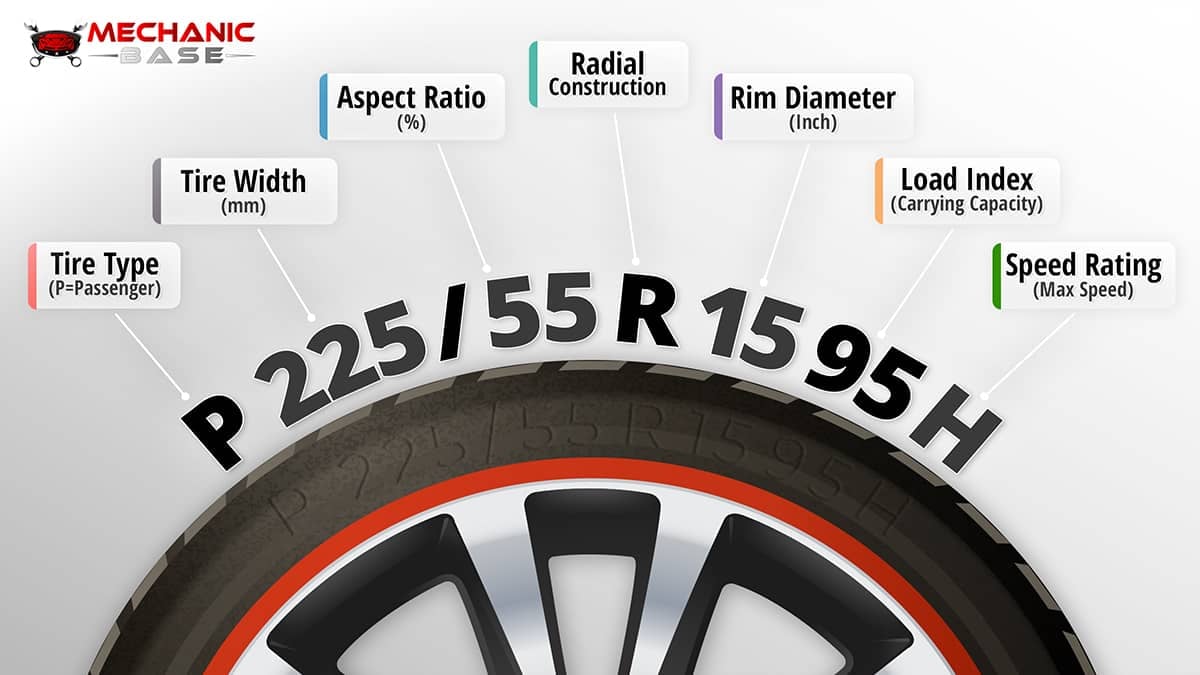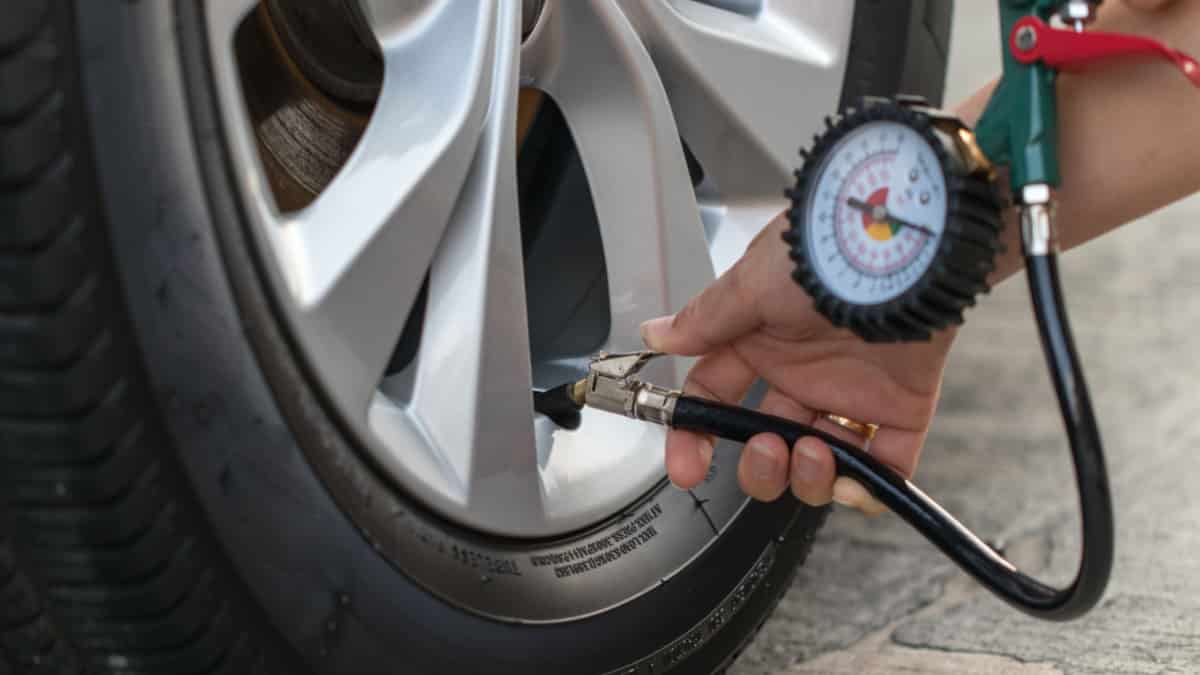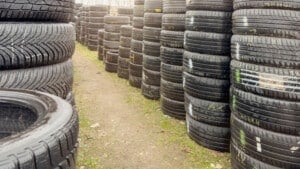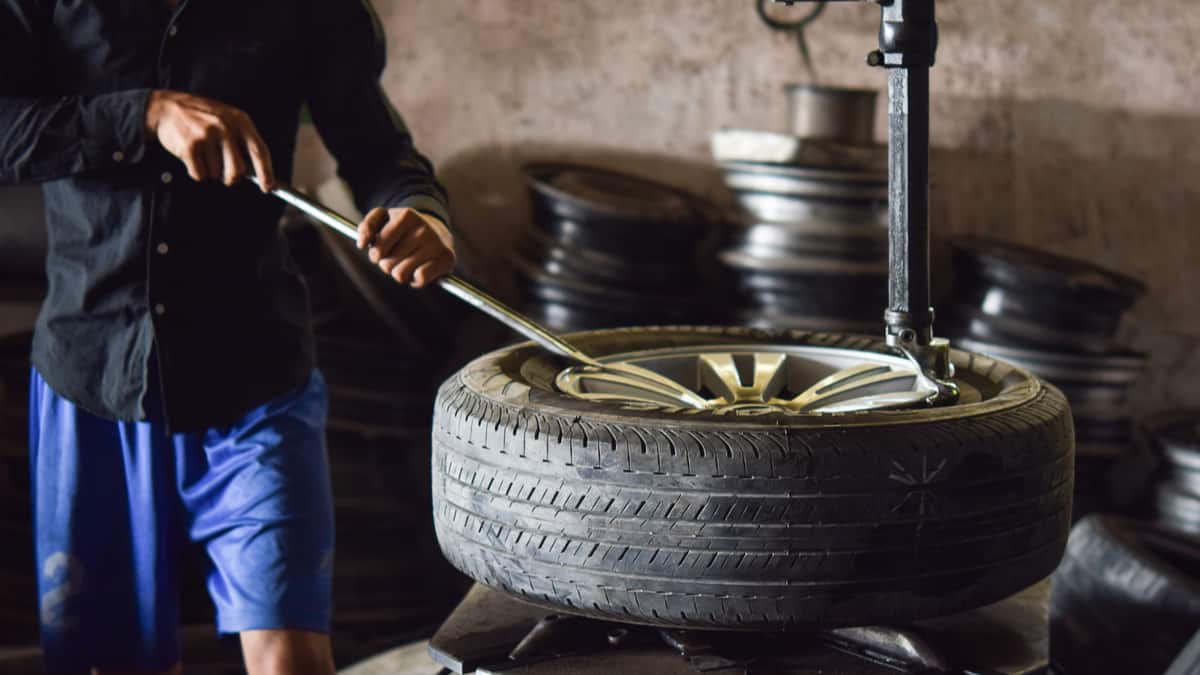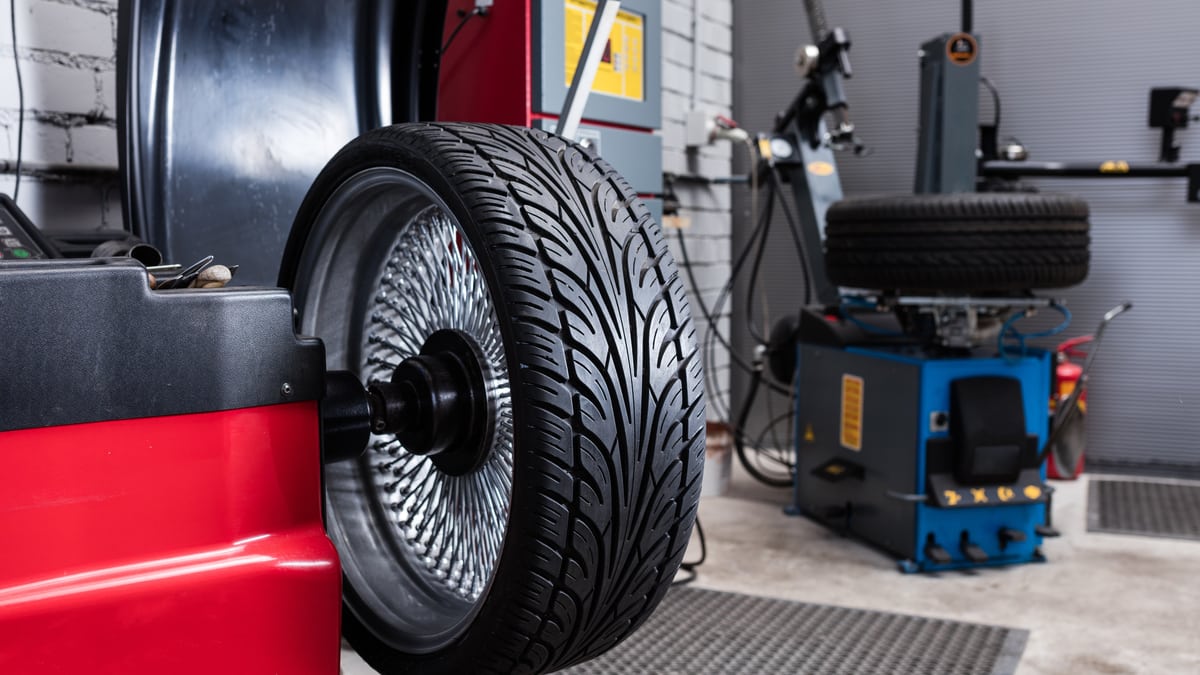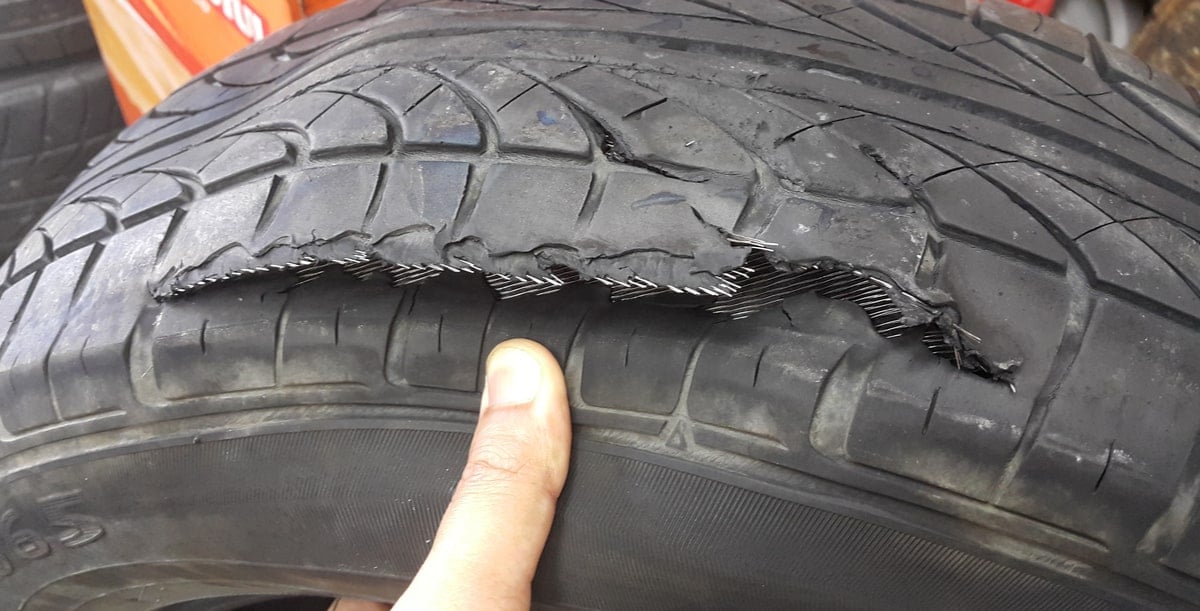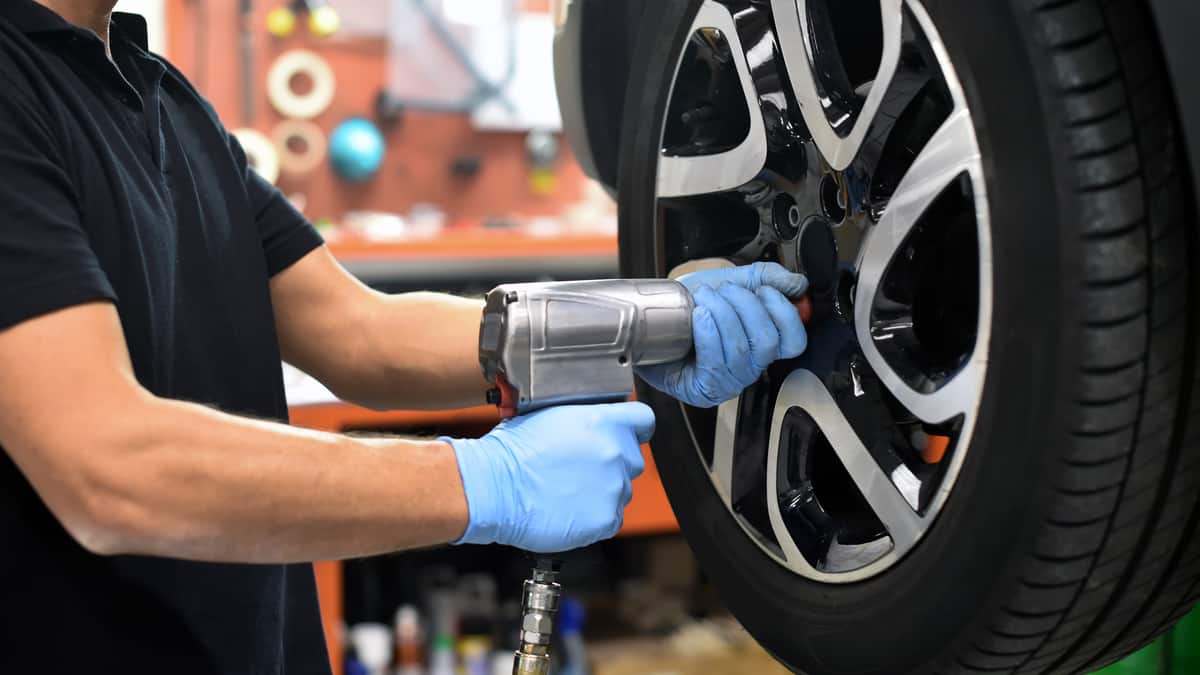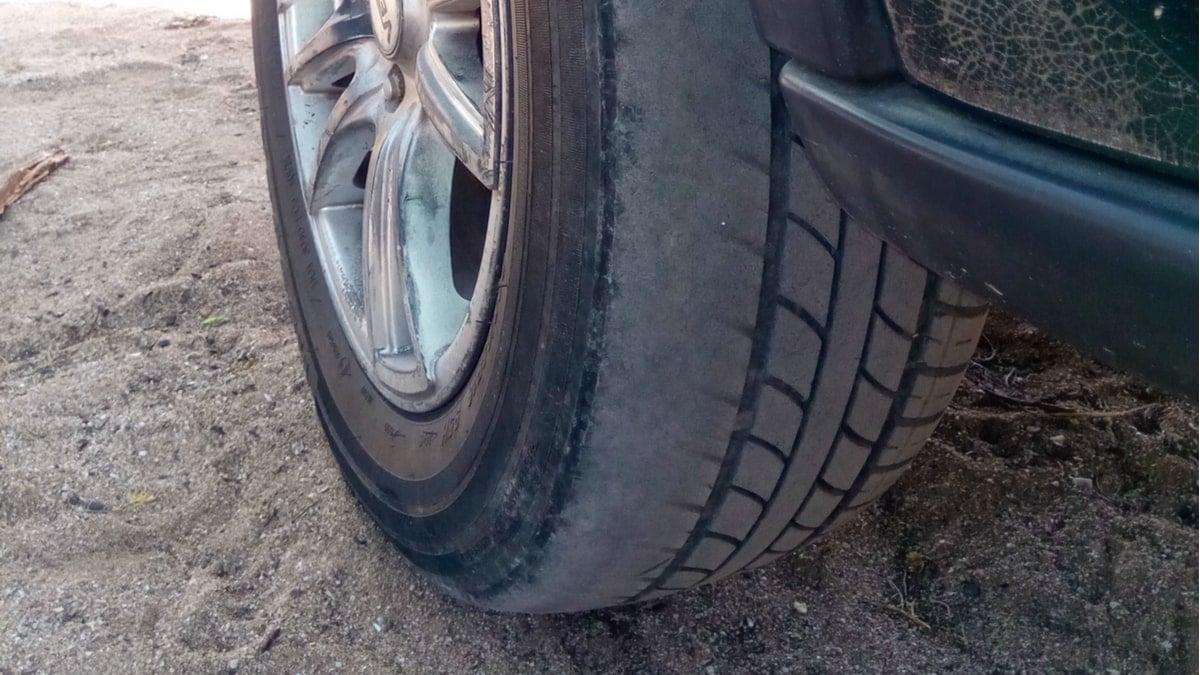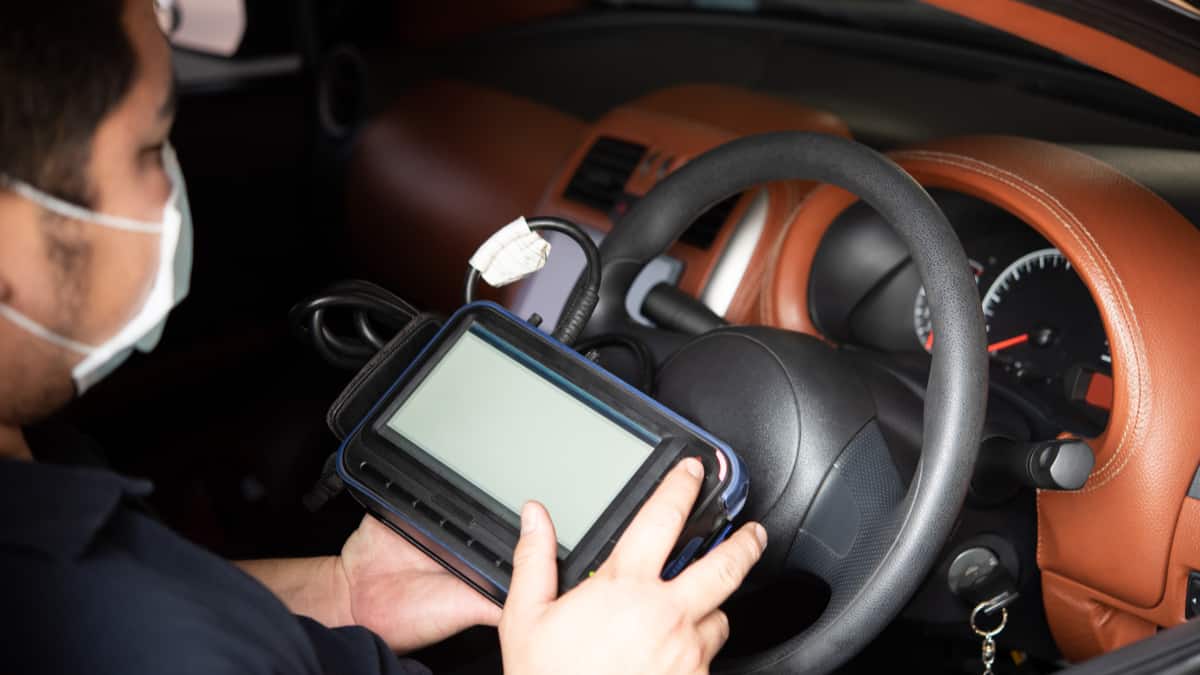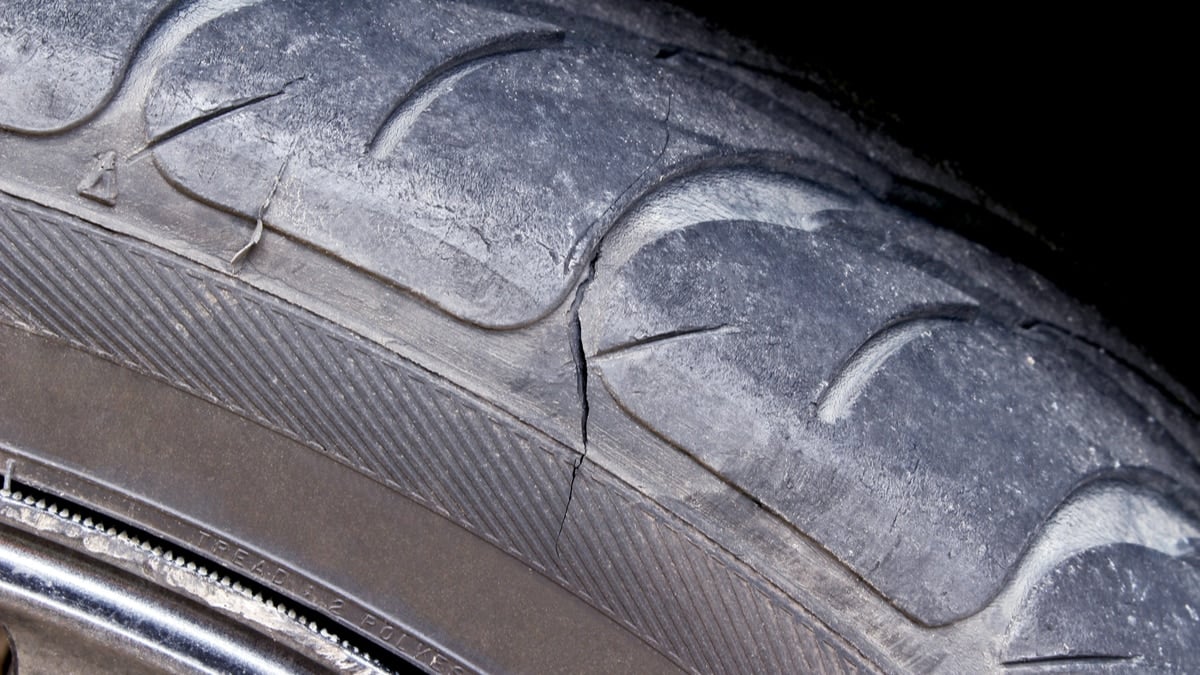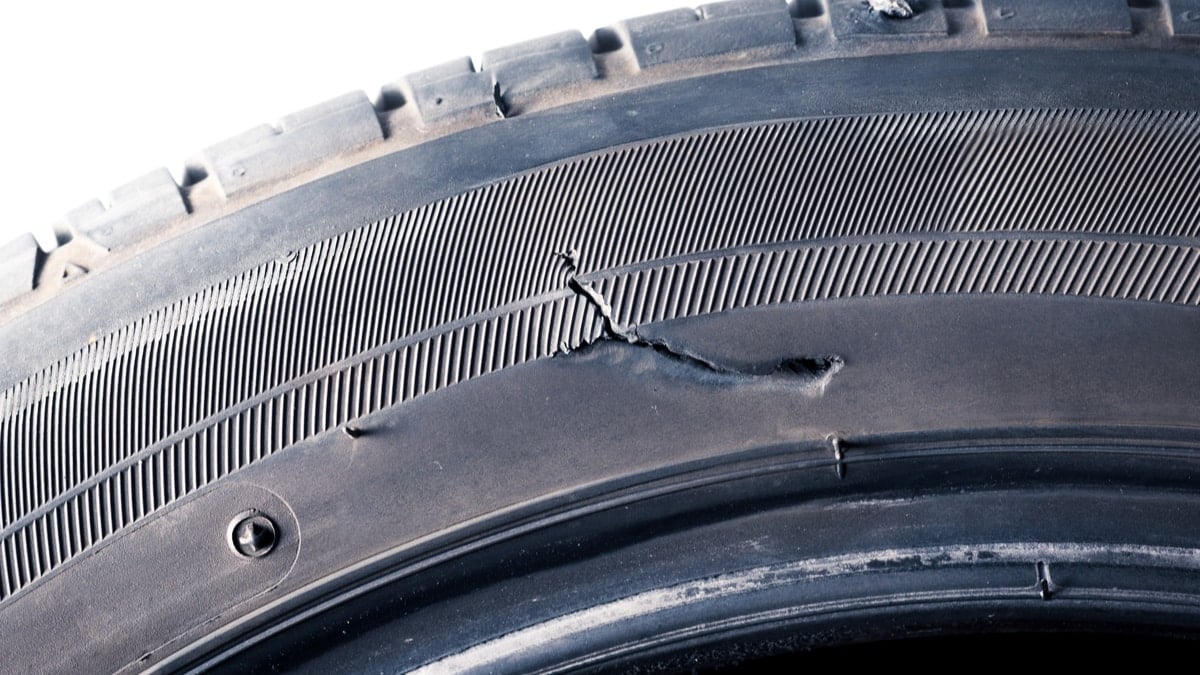You know how important it is to keep your tires in their best shape to protect your on-road safety. Even when you take every step possible, tire wear can still occur. Discerning what the tire wear means can help you make quick choices for a speedy resolution. Evaluating tire wear patterns should be something every driver can do.
We look closer at all of these wear patterns so you know how to fix your tires. We also evaluate tire damage and discuss what causes uneven wear to the tread.
Different Tire Wear Patterns
The most common tire wear patterns include patchy wear or one-sided inner or outside edge wear because of bad alignment. You can also see wear on the center because the tires are overinflated or wear on the edges where the tires are underinflated. Cupped tires usually indicate a bad suspension.
Here is a more detailed list of the different tire wear patterns:
1. Patchy Wear
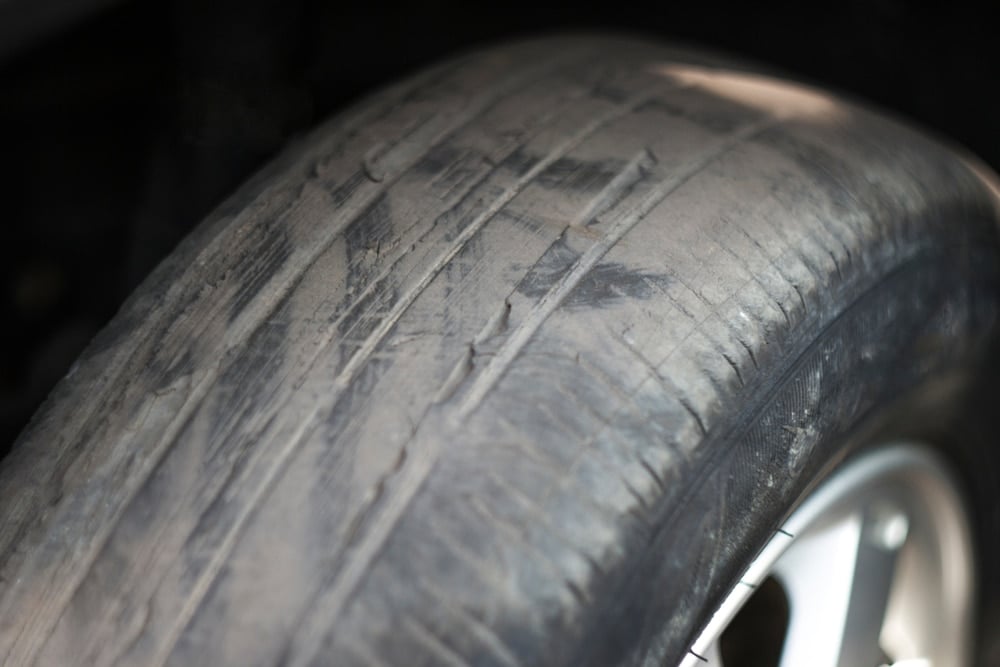
If the tread wear is looking patchy, you will see dips at various places on the surface. It only wears away in certain areas, with patches revealing themselves through the tire. Patchy tires will cause a bouncing sensation while driving. It can also affect the way the car handles and the traction you experience.
In most cases, balancing the tires, getting a tire rotation, and inspecting the suspension for worn parts are what’s needed to get it fixed.
2. One-Sided Wear (Inner or Outside Edge)
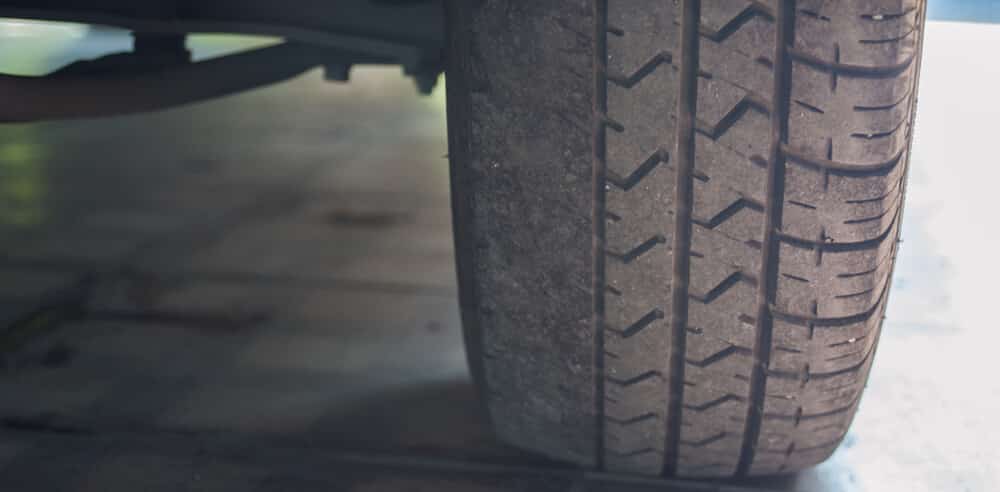
Wear on one side of the tire is otherwise referred to as toe or camber wear. If either the inner or outer part of the edge is wearing faster than the rest of the tire, you are looking at an alignment issue. Because the car is out of alignment, you are going to feel pulling to one side.
Again, you can prevent this problem by getting regular tire alignment. On average, the car should get aligned every year or when the tires are changed.
RELATED: Average Wheel Alignment Cost (Front, Rear & 4-Wheel)
3. Center Wear
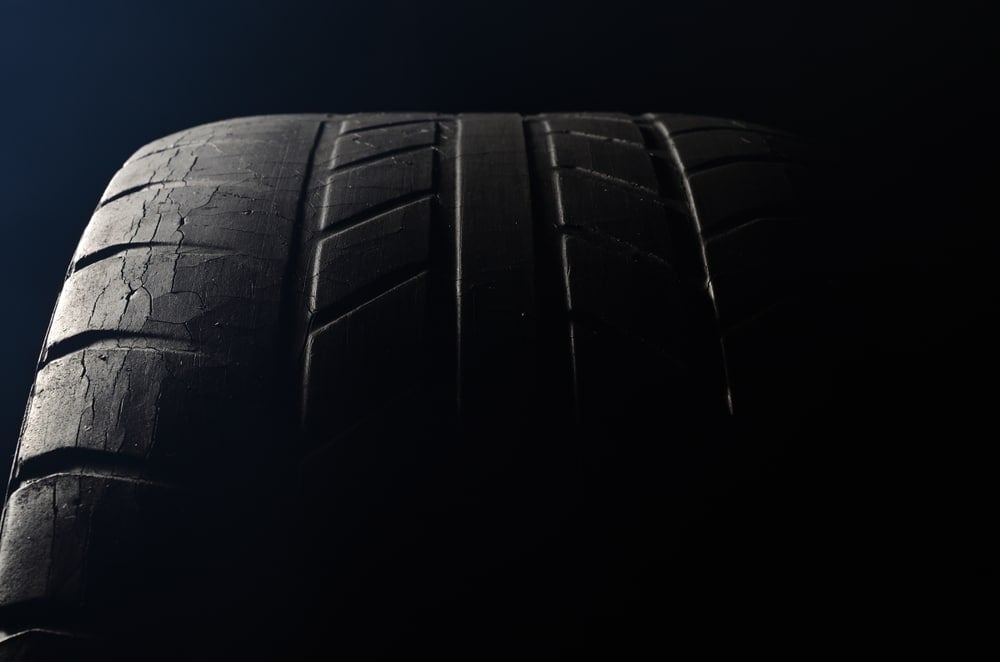
If you are noticing excessive wear to the center of the tire tread, the tire pressure is too high. It’s important to follow the recommended psi set by the manufacturer. This amount is listed in your owner’s manual and on the driver’s side door jamb.
When the pressure is too high, the tire’s center tread bulges out into the road. Because all of the contact is in the center, the tread is going to wear faster. Thankfully, it’s not difficult to reduce the air pressure and get it right.
RELATED: How to Find the Correct Tire Pressure For Your Car (4 Steps)
4. Edge Wear
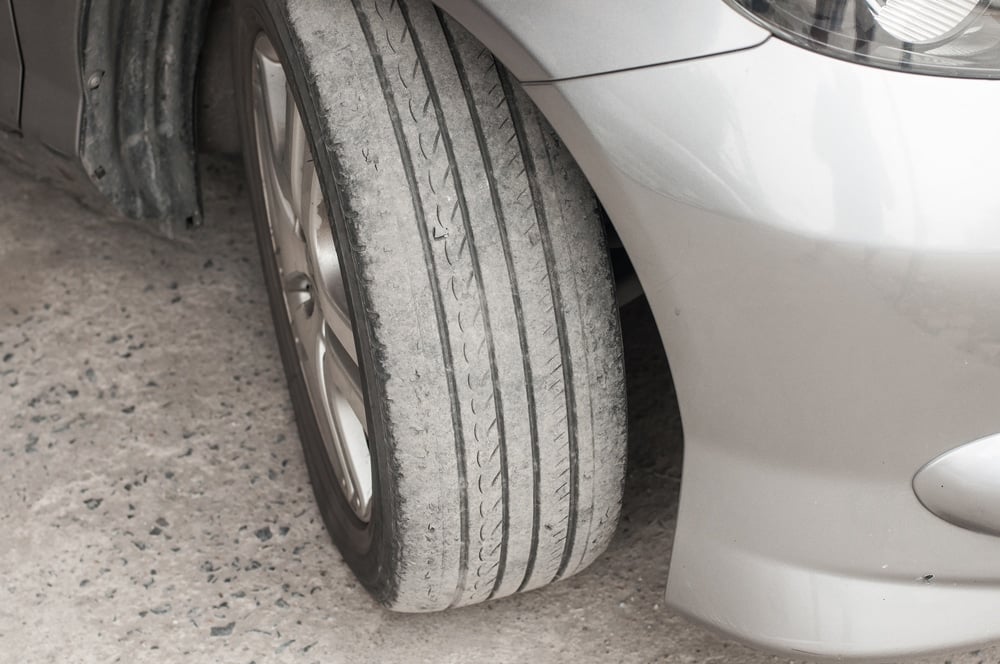
Edge wear is the opposite of what we’ve seen with the center wear. Because of this, you can assume that the tires are under-inflated. When there’s not enough air in the tires, the shoulders of the tires are going to make the most contact with the road.
Again, you need to check the recommended pressures for your tires. Inflate the tires until it reaches that pressure level and the problem should start to correct itself.
RELATED: What Tire Pressure is Considered Too Low?
5. Cupped Tires
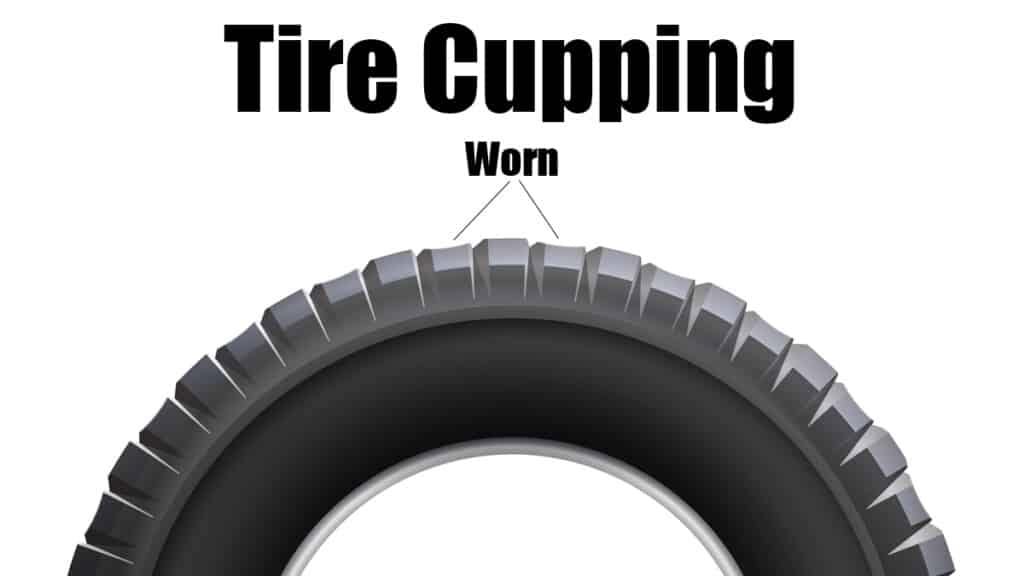
Cupping is a tire wear pattern that looks very different from the others. When a tire is cupping, it develops scalloped or diagonal wear patterns. These tires can cause vibration and shaking, leading to a rough ride, even on smooth road surfaces.
Tire cupping occurs when there’s a problem with the suspension system. As parts fail, other issues can also occur with the suspension, leading to a more dangerous drive. For this reason, you should never ignore the symptoms of tire cupping.
Damaged Tire Tread Conditions
1. Exposed Cords
When the tire cords become exposed, the problem could be caused by a number of issues. Sometimes it’s the result of underinflating the tires and other times, it’s due to the alignment. Either way, allowing your tires to wear unevenly will lead to the cords becoming exposed.
Once you see the tire cords where the tread was, you must replace your tires. It’s no longer safe to drive on these tires.
2. Belt Separation
If the tread begins to separate, you are usually dealing with a manufacturer defect. This dangerous situation can be covered by the manufacturer if the tire is still covered under its warranty.
However, the tread can also separate if you put an extreme amount of weight on the tires beyond what they are rated for. It also occurs if you continue running the car with underinflated tires. Either way, it’s important to have the tires replaced immediately before a blowout occurs.
3. Chunking
It’s not normal to see a chunking tire unless the vehicle was driven off-road. If you regularly drive down gravel or unpaved roads, there could be blocks of tread missing from the rubber.
It’s possible that the tires are still decent enough to drive, but they should be evaluated. You want to make sure that the integrity of the tire is intact, especially if you plan to continue driving off-road.
4. Impact Break
It’s not always easy to see an impact break. The damage is done most often when the tire collides with potholes or other obstacles. As tires have gotten stronger, the breaking occurs less frequently. Today’s sidewalls are built to withstand more damage than they once were.
The only symptom you might notice with a novice eye is some bulging to the sidewall caused by the damage. Still, if you’ve recently hit something, you want to have the tires examined. If there’s any damage, replace the tires. It’s also possible that the rim has been damaged.
RELATED: Tire Sidewall Damage – What Is It & When To Replace The Tire?
5. Sidewall Indentation
When there’s an indentation to the sidewall, it’s not going to be even. You might notice some unusual dimples, causing you to perform a detailed inspection. Most of the time, these dimples are harmless and shouldn’t affect the safety of your tires.
However, you should still have the tires checked out by a professional. It’s better to be safe and get the tires changed when in doubt.
Why Does Uneven Tire Wear Occur?
1. Improper Tire Pressure
Many tire wear issues can be traced back to having the wrong amount of air inside. Tire pressures need to be constantly checked to ensure everything is running right. It’s recommended that tire pressures get checked once a month, as a minimum. Plus, these pressures should be checked before the car has been driven. On top of that, when the weather changes, the tire pressure needs to be checked again, as different temperatures can change how much air pressure remains.
Find the right tire pressure measurement in your owner’s manual. It can also be found on the driver’s side door jamb. If you change the tire size on your vehicle, these pressures will no longer be your standard.
2. Lack of Rotation
Regular tire maintenance is imperative to keeping the tread in optimal condition. Just like you change the oil in your car, you must also follow recommendations for the tires. By rotating the tires, you ensure that the tread wears as evenly as possible.
Rotating the tires requires moving them to a different location on the vehicle. With each vehicle, the pattern for rotation could be different. Sometimes, they move front to back, while other times, a diagonal pattern is required. For this reason, it’s best to speak with a professional if you don’t know how to rotate your own tires.
3. Misaligned Wheels
Another key maintenance task that’s necessary is to have the wheels aligned. If the wheels aren’t properly aligned and balanced, the tires are going to wear unusually.
In a typical wheel alignment, multiple angles are investigated and adjusted. The car is put on a special rack that helps to adjust the camber, caster and toe angles. Alignments should be performed yearly or any time you notice the tires wearing funny.
RELATED: 5 Symptoms of a Bad Wheel Alignment (Why you should fix it)
4. Defective Suspension Parts
The suspension system plays a big role in keeping the tires in good shape. When there’s a defect within the system, the tires can start cupping. It will also lead to trouble maintaining proper handling and you could notice a decrease in traction, which puts you at risk for an accident.
With so many parts making up the suspension system, it’s best to have a professional check it often. If any parts are worn out or bent, such as the shocks or struts, it’s best to have them replaced before bigger problems occur.
5. Poor Driving Habits
If you don’t drive carefully, you could be putting more wear on the tires than needed. In your hurry to get to work, you could run through tires quicker, thereby costing you more money.
Your braking habits must also be examined. If you are rushing to the next stop light only to slam on the brakes every time, you are causing more wear than necessary. Taking more precautions while driving will not only help you keep your tires in good shape, but the changes will keep you safer, so it’s a win-win situation.
Which tires wear out first?
Front tires usually wear faster than rear tires. This is mainly due to the fact that the engine is located at the front and most of the weight is on the front tires on most car models.
Should all four tires be replaced at the same time?
If you have a four-wheel drive car, you want to change all four tires at the same time. If you have a two-wheel drive, it may be enough to change both tires on the same axle, but you don’t want to change just one tire.
Do cheap tires wear faster?
Yes, cheap tires can wear out much faster than expensive tires, and in the end, you might not even save money by buying cheap tires because they wear out faster. However, always make sure that the wheel alignment and tire pressure are good to extend the life of the tire.
Tire wear patterns occur in most cases due to overinflated or underinflated tires, so it is very important to always keep the correct tire pressure in your tires. You can also reduce the risk of this by regularly doing a wheel alignment and tire rotation every two years at least.
The common tire wear patterns include:
- One-Sided Wear (Inner or Outer)
- Patchy Wear
- Center Wear
- Edge Wear
- Cupped Wear
Remember that worn tires can be a safety hazard. Check your tire’s tread regularly to ensure you have enough tread depth for safe driving. If you find that your tires are worn, replace them as soon as possible.
Learn more:
- Is It Dangerous to Drive with Low Tire Pressure? (& What to Do)
- 8 Best Performance Tires
- Is It Safe to Drive on a Tire with a Bubble?
Categories: Tires
